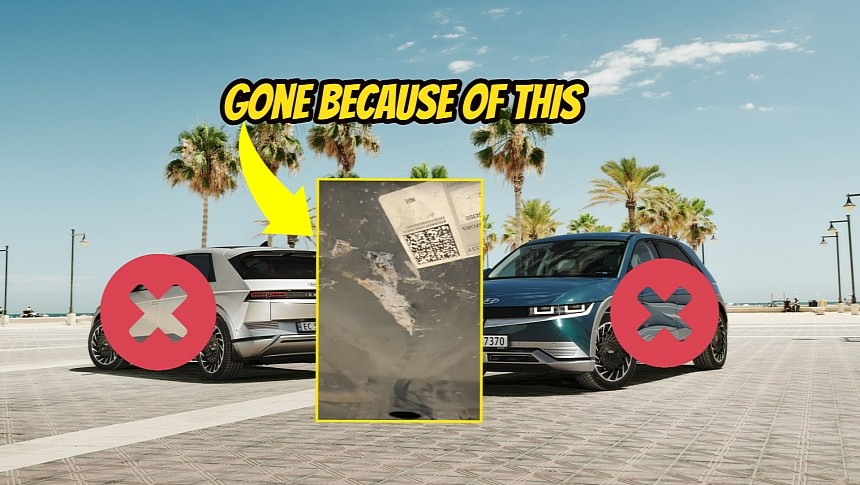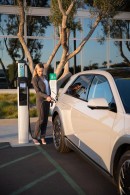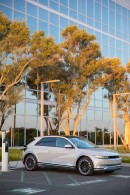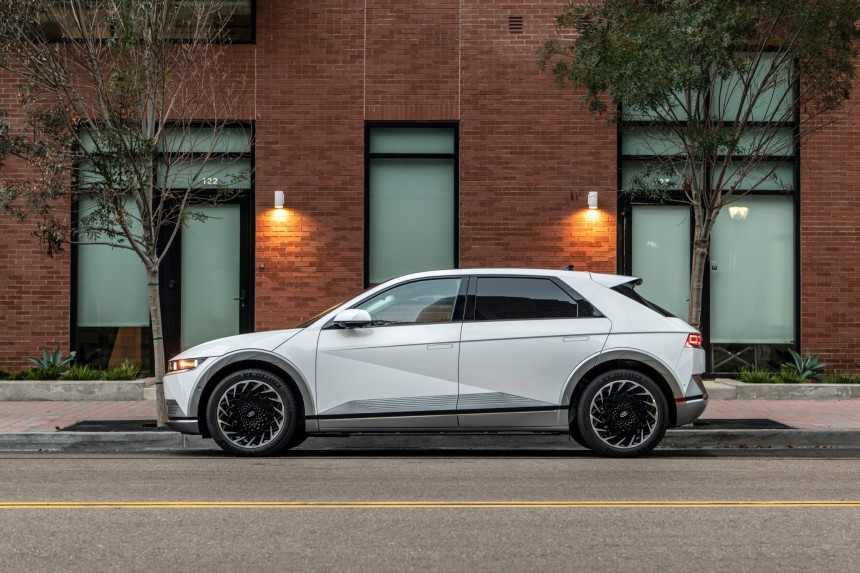Hyundai's Ioniq 5 is one of the best-looking zero-emission crossover SUVs out there. Photos don't paint a good picture. You might think it's a South Korean VW Golf at first. But the EV is generously sized and boasts many cool features. Sadly, two Canadian owners show us what's wrong with EV ownership.
All-electric vehicles were supposed to become the best solution to our road transport problems. They should have ended our reliance on fossil fuels and helped the environment by cutting the greenhouse gasses coming out of our gas- and diesel-hungry autos' rear ends.
However, early adopters' misfortunes show that you need to be very careful when embracing a new form of mobility. Those who didn't do their research well before signing the buyer's agreement discover that insurance might be costlier, fast-charging can be pricier than filling up with gas, registration might be too much, software might be glitchy, tires might need replacing more often, and repairs can take quite a while.
There are upsides, though! A good EV can be more than just a commuting appliance. The Ioniq 5, for example, has bidirectional charging. It can power your home if the high-voltage energy storage unit has some juice left in it. Use a vehicle-to-load adapter, and you can also power camping gear or things like a washing machine.
Sadly, that's not enough. Dependability and good design guarantee that EVs achieve their green potential. That is not going to happen if fixing a minor fender bender results in USD 40,000+ bills. It will also not work out if insurers keep writing off EVs after small accidents. This planet does not have infinite resources.
A Hyundai Ioniq 5 buyer's bad luck revealed a major issue in the manufacturer-dealership-insurer-customer relationship. Long story short, he was asked to pay CAD 30,000 for a new high-voltage battery because the panel protecting it was scratched. The technicians deemed the energy storage unit unrepairable.
The man got the insurer involved. But when the company called the same dealership, the price of a new battery more than doubled. It cost more than the car when it was new. That meant his Ioniq 5's journey ended because the insurance company had to total it. Besides losing his ride, the premium was poised to rise by about 50%.
The case picked up steam online, and Hyundai corporate got involved. The automaker's Canadian subsidiary asked the Ioniq 5 owner if he would be interested in buying a new EV with a discount from them.
Later, things got complicated. Hyundai Canada said the dealer was independent and underlined that its battery costs were in line with the market.
One of our readers who works for a Hyundai dealership (Phil B.) pointed out that the manufacturer must authorize any high-voltage battery replacement done under warranty. The company won't pony up if a new energy storage unit is needed because of something that is not a failure pertaining to the pack itself or auxiliaries going haywire. That makes sense. No warranty will cover the replacement of an internal combustion engine because you forgot to go in for an oil change or tracked the car without taking all the necessary precautions.
However, there might be a design problem because another Ioniq 5 owner confirmed for Motormouth that the high-voltage energy storage unit does cost over CAD 60,000 to replace, with labor and tax included. Since it did not fail on its own, that expense was going to be covered by them or the insurer.
It's worth noting that early Tesla Model S models had this issue. The brand fixed it in 2014 by adding a titanium underbody shield and aluminum deflector panels.
Just like in the previous case, this owner also damaged the panel that was supposed to protect the battery. They accidentally ran over a muffler (the part that silences an exhaust). Some minor scrapes and tears were what led to that huge replacement cost, which is similar to what happened the first time around. Fragile things, these cars!
In the end, both EVs were written off. That is a shame. All-electric cars were supposed to be the brightest shade of green and help us all have a more sustainable lifestyle. They should have shrunk our carbon footprints. If we are scrapping cars because of minor panel damage, that will not happen anytime soon.
Maybe leasing an EV is better than financing or buying it outright. Things are not looking good for owners who do not treat their zero-emission rides with extra care.
However, early adopters' misfortunes show that you need to be very careful when embracing a new form of mobility. Those who didn't do their research well before signing the buyer's agreement discover that insurance might be costlier, fast-charging can be pricier than filling up with gas, registration might be too much, software might be glitchy, tires might need replacing more often, and repairs can take quite a while.
There are upsides, though! A good EV can be more than just a commuting appliance. The Ioniq 5, for example, has bidirectional charging. It can power your home if the high-voltage energy storage unit has some juice left in it. Use a vehicle-to-load adapter, and you can also power camping gear or things like a washing machine.
Sadly, that's not enough. Dependability and good design guarantee that EVs achieve their green potential. That is not going to happen if fixing a minor fender bender results in USD 40,000+ bills. It will also not work out if insurers keep writing off EVs after small accidents. This planet does not have infinite resources.
A Hyundai Ioniq 5 buyer's bad luck revealed a major issue in the manufacturer-dealership-insurer-customer relationship. Long story short, he was asked to pay CAD 30,000 for a new high-voltage battery because the panel protecting it was scratched. The technicians deemed the energy storage unit unrepairable.
The man got the insurer involved. But when the company called the same dealership, the price of a new battery more than doubled. It cost more than the car when it was new. That meant his Ioniq 5's journey ended because the insurance company had to total it. Besides losing his ride, the premium was poised to rise by about 50%.
The case picked up steam online, and Hyundai corporate got involved. The automaker's Canadian subsidiary asked the Ioniq 5 owner if he would be interested in buying a new EV with a discount from them.
One of our readers who works for a Hyundai dealership (Phil B.) pointed out that the manufacturer must authorize any high-voltage battery replacement done under warranty. The company won't pony up if a new energy storage unit is needed because of something that is not a failure pertaining to the pack itself or auxiliaries going haywire. That makes sense. No warranty will cover the replacement of an internal combustion engine because you forgot to go in for an oil change or tracked the car without taking all the necessary precautions.
However, there might be a design problem because another Ioniq 5 owner confirmed for Motormouth that the high-voltage energy storage unit does cost over CAD 60,000 to replace, with labor and tax included. Since it did not fail on its own, that expense was going to be covered by them or the insurer.
It's worth noting that early Tesla Model S models had this issue. The brand fixed it in 2014 by adding a titanium underbody shield and aluminum deflector panels.
Just like in the previous case, this owner also damaged the panel that was supposed to protect the battery. They accidentally ran over a muffler (the part that silences an exhaust). Some minor scrapes and tears were what led to that huge replacement cost, which is similar to what happened the first time around. Fragile things, these cars!
In the end, both EVs were written off. That is a shame. All-electric cars were supposed to be the brightest shade of green and help us all have a more sustainable lifestyle. They should have shrunk our carbon footprints. If we are scrapping cars because of minor panel damage, that will not happen anytime soon.
Maybe leasing an EV is better than financing or buying it outright. Things are not looking good for owners who do not treat their zero-emission rides with extra care.





















